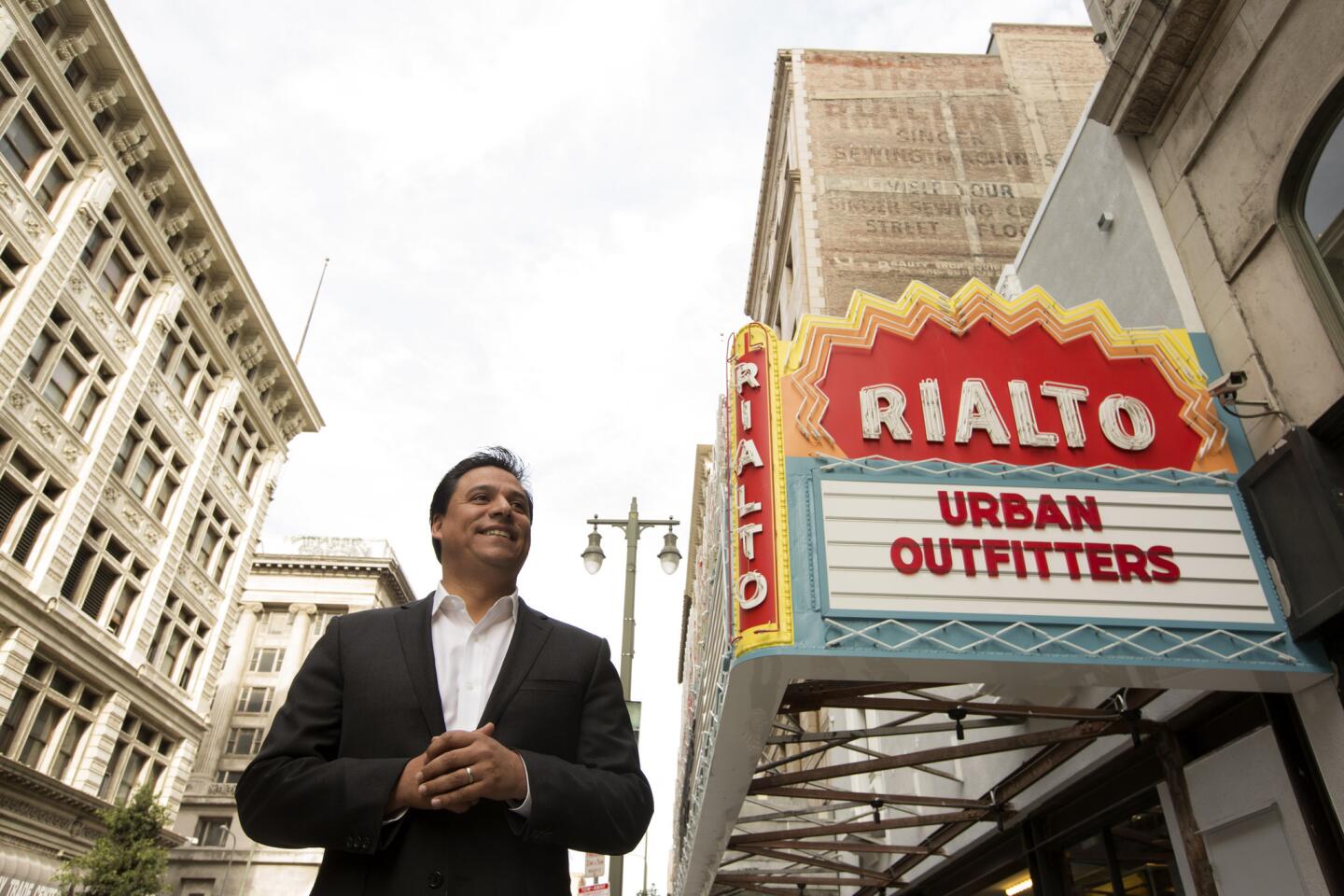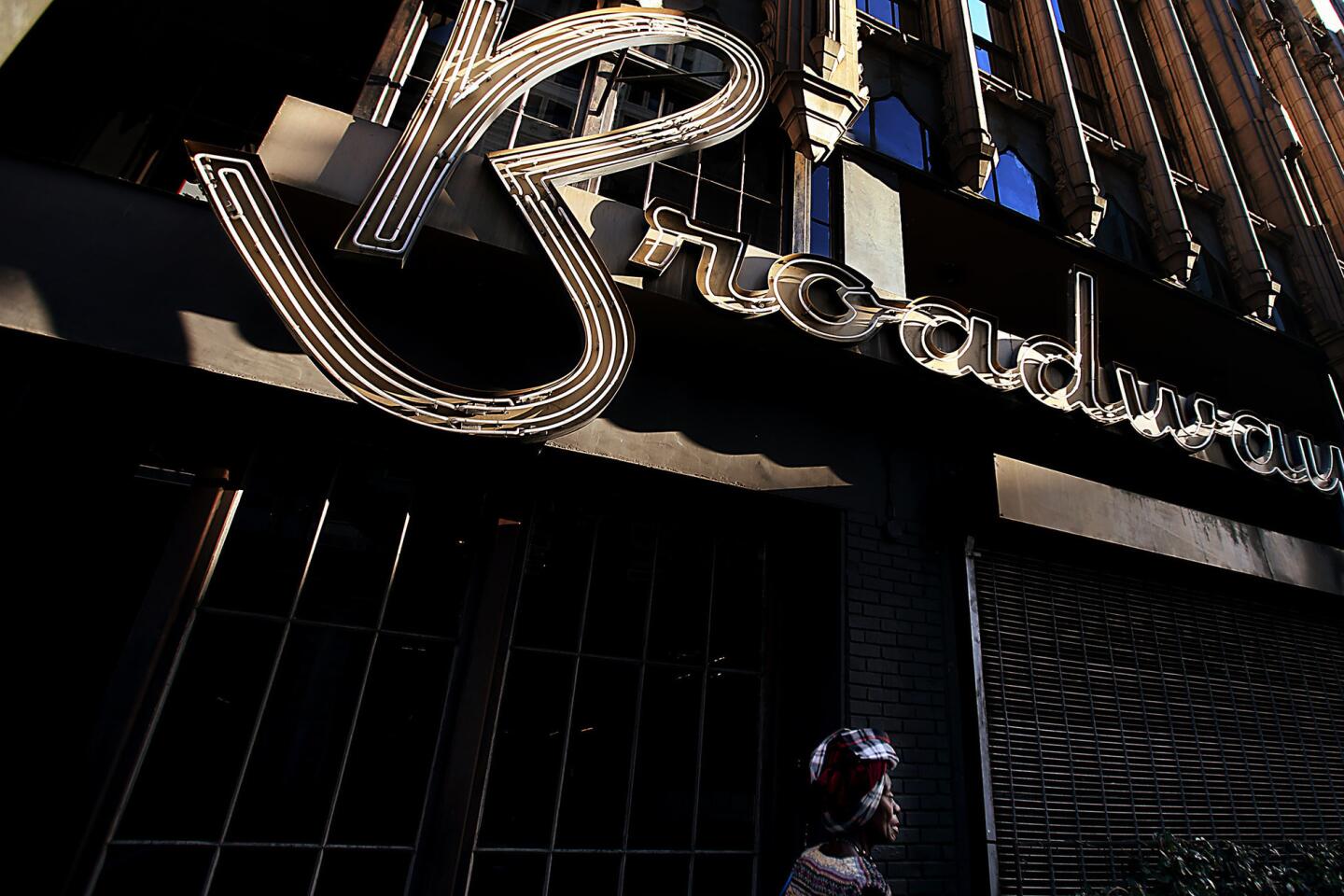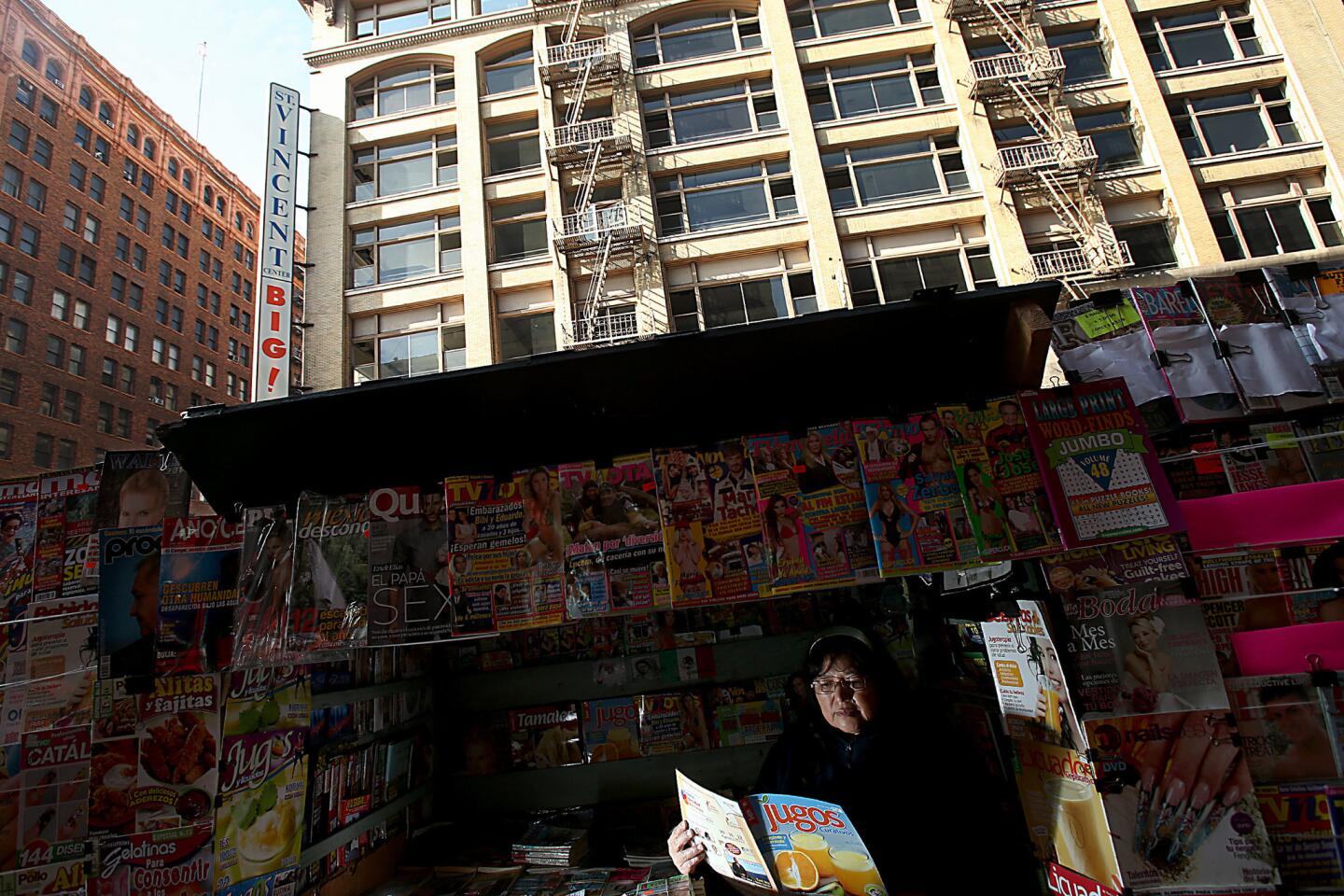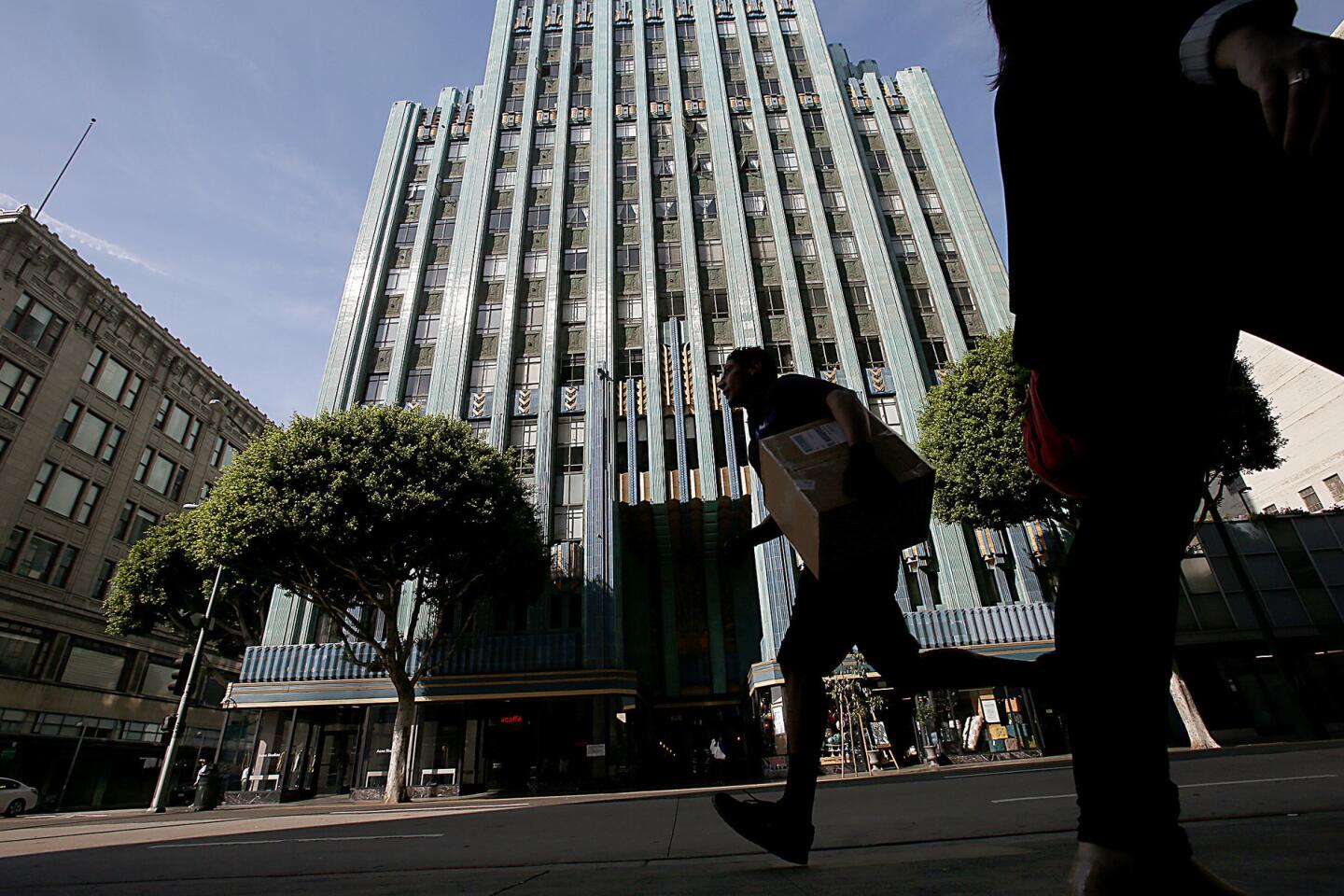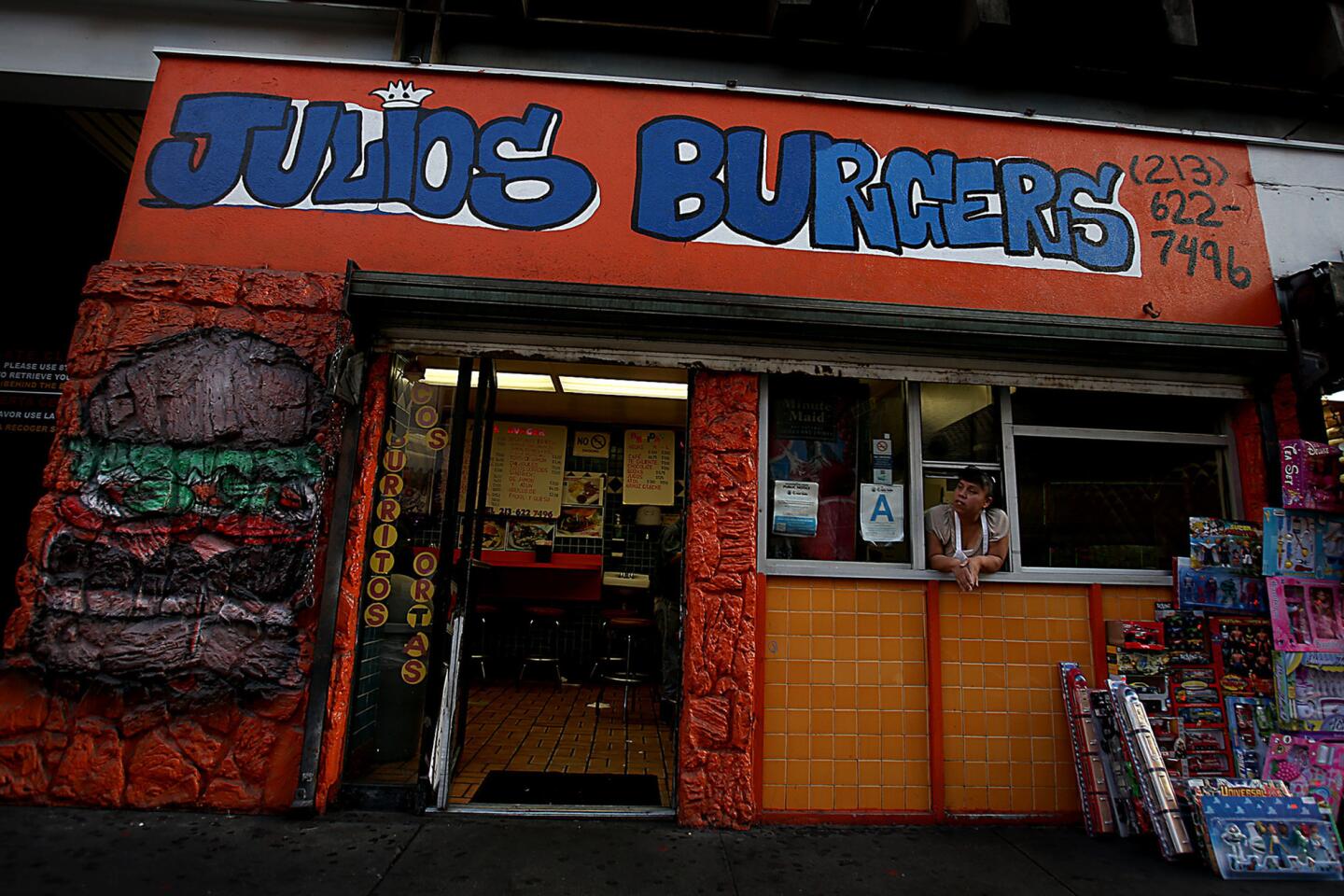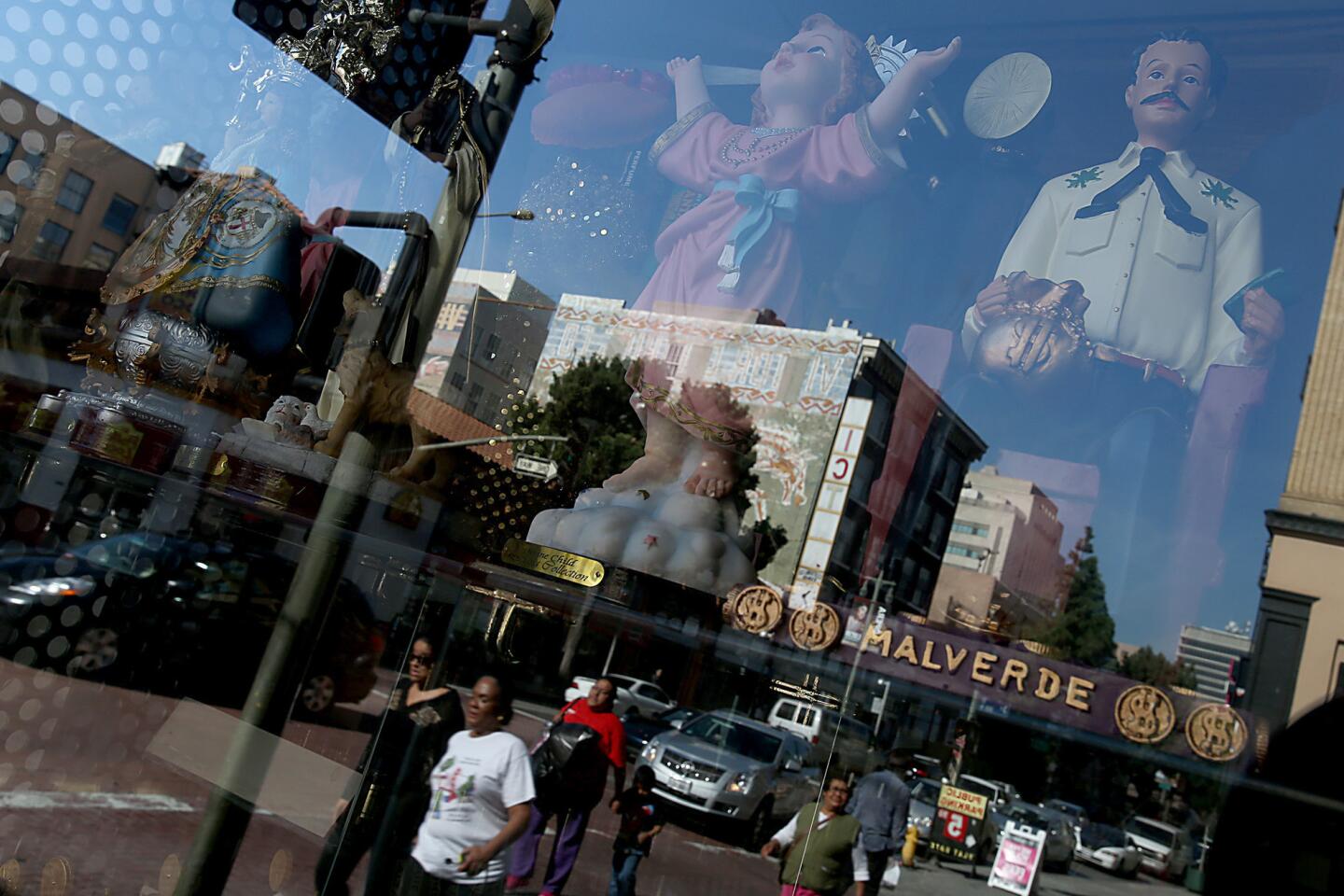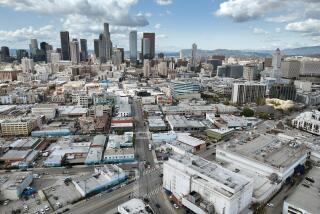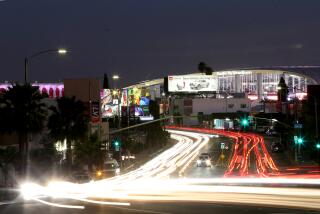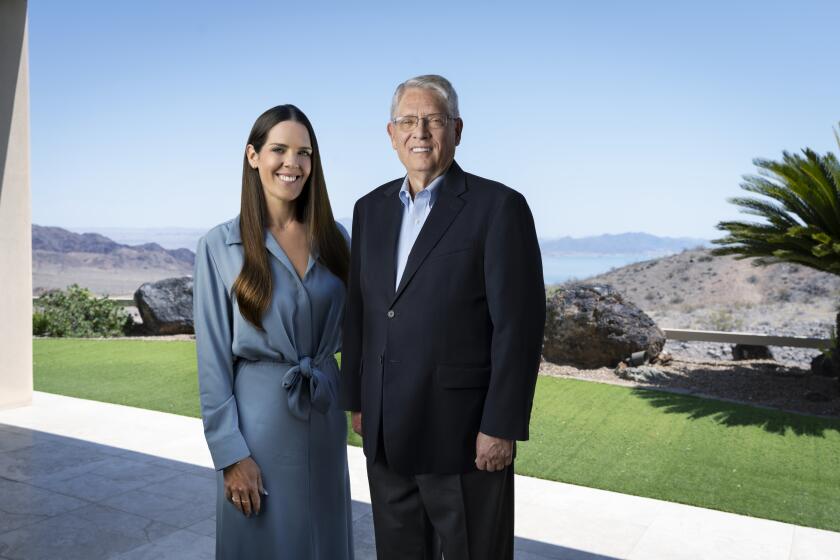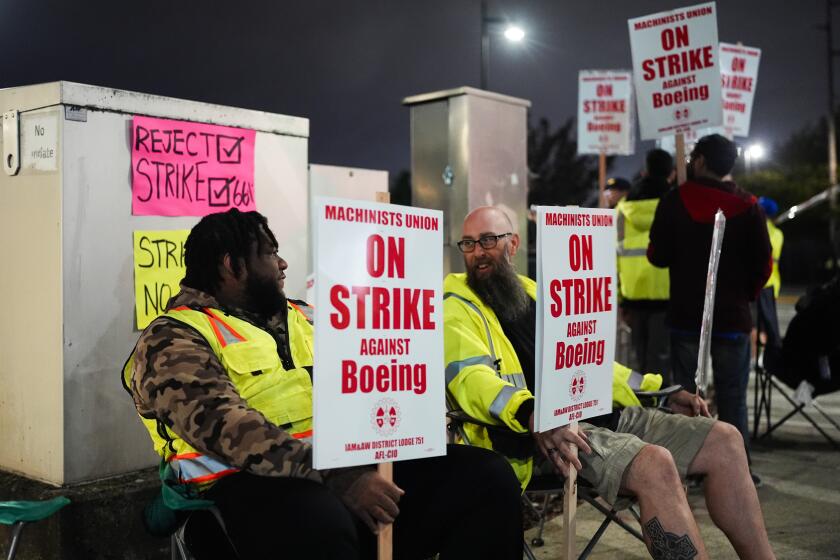L.A.’s Broadway showing signs of reawakening
Broadway, the sparkling entertainment district of mid-20th-century Los Angeles, had a long fall.
As residents moved to the suburbs, opulent movie palaces dating to the early days of the film industry closed their doors. Upscale shops were closed, and department stores decamped for newer neighborhoods in the 1970s and 1980s. Businesses catering primarily to Latino immigrants kept the sidewalks active, but most buildings fell empty above the first floor.
Much of downtown has enjoyed a renaissance since 2000. New residences, bars and restaurants have peppered downtown from L.A. Live to Chinatown, but the dream of making Broadway a hot spot again has remained elusive. Now, five years into a Bringing Back Broadway initiative launched by politicians, preservationists and property owners, there are signs of reawakening prosperity.
PHOTOS: Bringing Broadway Back
On the Broadway blocks between 2nd and 12th streets are a growing number of new bars, restaurants and stores. Near Olympic Boulevard, the trendy Ace Hotel just opened in a former office building and movie house, and plans for another boutique hotel a few blocks away were announced in December.
An Urban Outfitters clothing outlet recently set up shop in the former Rialto Theatre. Hip Swedish retailer Acne Studios launched a flagship store in the Art Deco landmark Eastern Columbia building, a former department store turned luxury condominium tower.
In an effort to hasten the recovery and revive still run-down sections of Broadway, city officials in December revamped real estate development guidelines intended to make it easier for landlords to reactivate their old buildings. The policies are intended to help Fire Department and Department of Building and Safety staff members consistently interpret the rules for upgrading old buildings that don’t meet modern safety codes.
“We are knocking the dust off of decades of layers of red tape and impossible and conflicting codes that have resulted in our historic buildings on Broadway sitting empty for far too long,” said City Councilman Jose Huizar, whose district includes downtown.
In an interview with The Times, Huizar — chairman of Bringing Back Broadway — talked about new real estate development guidelines that were adopted in December and how Broadway is evolving as downtown Los Angeles gets its mojo back.
You described these new guidelines as the biggest thing downtown since the Adaptive Reuse Ordinance of 1999 that opened the floodgates to renovations of historic buildings. What do you expect their primary benefit to be?
This is the linchpin that will allow for full revitalization of these historic buildings on Broadway where about 1 million square feet on upper floors have been empty for decades. It will be easier and cheaper to put them to use again.
Why did we need more guidelines?
The city was requiring that once buildings were upgraded they must be brought up in full to modern codes, but it wasn’t clear which codes would be applied. Owners got different answers from different city staff members. There was a lot of uncertainty and confusion. It was easier for a lot of building owners to simply rely on lease activity on the first floor.
What was the main source of the confusion?
There were conflicts in the codes themselves, the California historic building codes that cities are supposed to interpret and use. Were we to use those codes or modern codes? Then there were different interpretations by different city departments.
Why won’t that happen again?
Now people can work with a staff person — a plan checker — dedicated to helping them through the process in Building and Safety and the Fire Department. They’ll help people navigate the guidelines. Safety will remain a priority.
Presuming this works, what is Broadway going to look like in five years?
You will see a real mix of activity among people from a mix of backgrounds, including tourists and residents who live on Broadway. There will be creative offices upstairs, new restaurants going up. There’s going to be a wide variety of activity.
Some people have expressed fear that gentrification will drive out low-income residents and rob Broadway of some of its more recent ethnic flavor.
Concerns about gentrification were overstated initially. We are opening up historic buildings and floors that haven’t been used in decades, not removing people. There will be a change, but we’re adding more people and more services.
What will happen next?
We need a dress rehearsal for our plans to upgrade the streetscape. We will expand the sidewalk, add more benches and trees. We want to make people comfortable that they are in a walking environment.
On what block or blocks will that dress rehearsal take place before you roll out the new streetscape on all the main blocks of Broadway?
Preliminary work is underway to reconfigure Broadway from four traffic lanes to three between 2nd Street and 11th Street [by eliminating one southbound lane], adding new plaza spaces on the west side of the street. We should be done by the end of the summer.
Financial challenges have emerged for the planned streetcar line down Broadway. Do you think that will still happen?
We are very hopeful about the streetcar. We have to get a handle on costs and will know better what they are by mid-2014. Whatever that number is, we will get it from a federal grant or do a public-private partnership to fill in that final gap. I think it’s a matter of when, not if.
More to Read
Inside the business of entertainment
The Wide Shot brings you news, analysis and insights on everything from streaming wars to production — and what it all means for the future.
You may occasionally receive promotional content from the Los Angeles Times.

